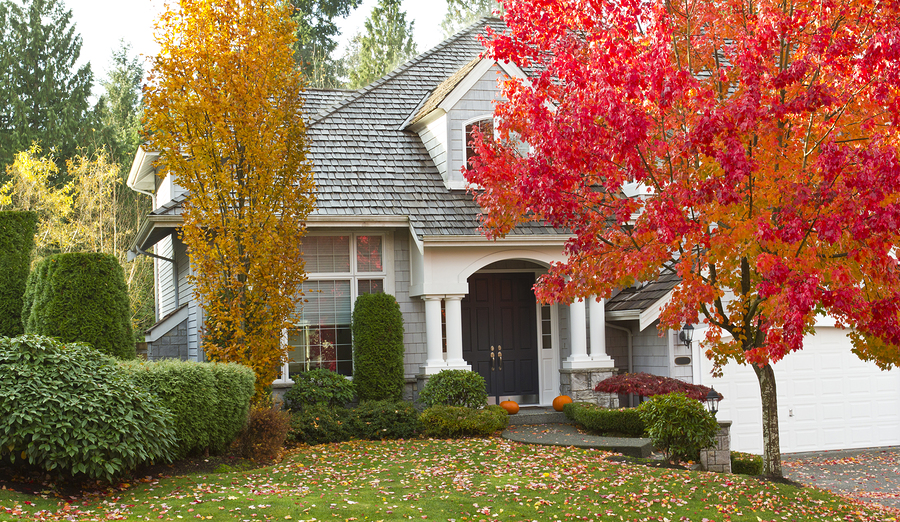Winter Lawn Care and Leaf Removal

Learn all about winter lawn care and leaf removal tips in this post!
Why Leaf Removal from Lawns is Important
Putting together your weekend chore list and feeling reluctant to add leaf pick to it? Leaf removal is pretty important to lawn health. Leaving leaves on the lawn areas can create ideal environments for fungus and mold, thick layers of leaves can exclude sunlight and air from lawns, causing thinning over time. Thick leaves can also increase winter lawn damage of mice and voles. And it’s not just your lawn that can suffer; in urban areas, loose leaves are often blown over curbs and end up in in storm drains that then can clog and cause street flooding.
If you don’t have a ton of leaves falling or if the leaves are small, you can mulch them into the lawn with a mulching mower (more on this in the next section) or blow the whole leaves into landscape beds, avoiding areas with low growing plants. This method of lawn leaf removal isn’t ideal if you have a a large quantity of leaves. Mulching too much debris into your lawn can cause the some issues like thinning over time. If you have allowed the lawn to get blanketing with a thick layer of leaves, mulching them into the lawn is not recommended. If you would like to use your leaves, attach your mulching mowers bagging attachment, go over them with your mower to mulch, then empty the bagged mulched leaves into your landscape beds, spreading evenly, or place in a compost pile.
One other item of note, there is more and more information out there, calling for homeowners to leave the leaves for overwintering moths and even some butterflies. A good location for intact leaves is a landscape bed area; however, be careful of potentially suffocating winter annuals, groundcovers or low growing perennials. Around shrubs or trees would be best.
Be sure to read the last section below for a bit more on placing fallen leaves in landscape beds.
How Often Does it Need to be Done?
We recommend removing leaves once a week as they begin to fall and once they are falling fast, removal may be needed twice a week. You can use a mulching mower and mulch them one to two times, then put a bag on the mower to pick them up. Raise the mower height once notch above normal mowing height when mulching and/or pick up the leaves. After all the leaves have been removed/ mulched for the season, lower the mower one notch below normal summer mowing height and mow.
Winter Control of Lawn Fungus
Once we have had a couple of hard frosts, warm season lawns such as bermuda and zoysia will start to go dormant. At that point, you will be able to see different colors of brown in the dormant lawn. Sometimes irregular, roundish shapes of darker brown can indicate areas of lawn fungus or lawn stress of some kind, such as grub damage. Watch these areas closely as the lawn greens up in the spring, makes notes of what you are seeing and come see us if your lawn is struggling to come out of dormancy.
For more information about preventing and controlling lawn fungus, visit this blog post.
Is Leaf Removal in Landscape Beds Necessary?
Leaves can be left in landscape beds to act as a mulch and add nutrients back into the soil. However, all kinds of insects and insect eggs overwinter in and on leaf debris, both those harmful to plants and those harmless to plants. If you have had an insect issue (whiteflies on gardenias, lacebugs on azaleas, scale on anything, just to name a few) this past year, we suggest doing a very good cleanup of fallen leaves from these plants. This reduces the population for next year and is good cultural pest control. Spraying these affected plants with Dormant Oil several times this winter would also be a good idea.